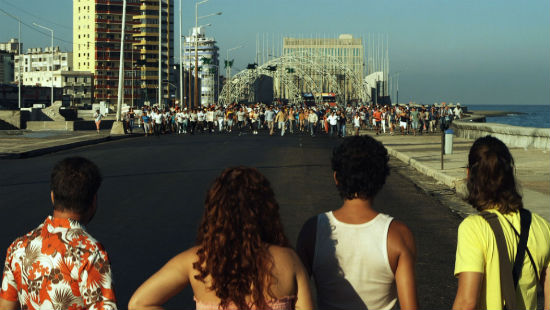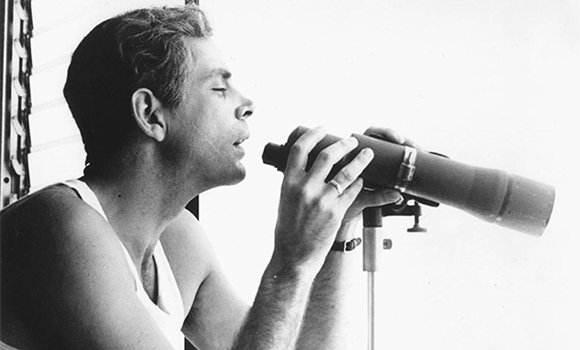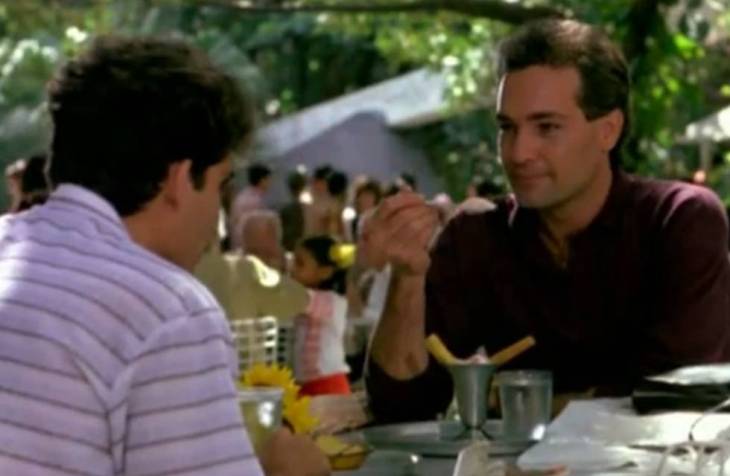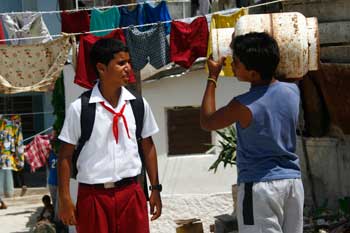
The city of Havana has been a muse, a protagonist and also a cliché in many Cuban films over the years. This time are looking at Havana in diverse and interesting ways. Which movie do you like best and why did Havana became the muse of Cuban cinema?
Sometimes, sadly, Havana is a cliché viewed from the same angle or the same position, linking it to the commercial image of a marginal city or of a single colour. But those of us who live there know that Havana is much more polychromatic than the stereotypes that have been presented. In this short list we will give you a tribute to the city from the cinema, and with diverse eyes as regards aesthetics and themes. It is not a canon, it is an emotional list, nostalgic for those films that have brought us to Havana from the big screen. Tell us what are the feature films that use the city as a space that has touched you the most.
The era of rumba films
During the thirties and forties, Havana was the favourite city for a certain style of rumba (with white female stars), especially for Mexican cinema. Several films of the time were dedicated to these Havana cabaret spaces and their vedettes. Juan Orol was one of the filmmakers of the time who worked with dancers such as María Antonieta Pons, a Cuban actress and faithful exponent of the so-called ‘Cinema of Rumberas’ in the ’40s and ’50s, along with Ninón Sevilla, Meche Barba, Rosa Carmina and Amalia Aguilar. In these films Orol included very figures such as Pedro Infante, Pedro Armendáriz and Tin-Tan and Havana spots such as the Fausto theatre, in the heart of the city.

Memories of underdevelopment
A film very representative of the time of transition between the pre and post-revolutionary period, and all the changes it generated amongst the people of the city, and the whole nation, was ‘Memories of underdevelopment’. Directed by the incomparable Tomás Gutiérrez Alea, this film gives Havana a strange transcendence, to be observed, especially via its social types, through the lens of the protagonist, who travels through the changes of the country looking at the changes in life of the people.

Se Permuta (‘The swap’)
Directed by Juan Carlos Tabío, the film, a classic of Cuban cinema, recounts a woman’s obsession with moving to another neighbourhood to supposedly secure a better future for her daughter. Needless to say, the whole plot of possible house swaps portrays the neighbourhoods and lifestyles in the city in the imagination of the people.

Vampires in Havana
This delightful film, part of Cubans’ emotional heritage, portrays the capital through animation, with the very special touch of director Juan Padrón. The Havana of the pre-revolutionary years and the underground movement, is seen from the colours and the roguish humour that characterize Cuban cinema.

Strawberry and Chocolate
The two characters of this film are in our veins, nothing less. The story of Diego and David, which begins at the Coppelia ice cream park, and continues at La Madriguera, a building today converted into a restaurant, and passes through the inventory of Diego’s Havana neighbours, is infused with the Capital’s culture at all times. The film, directed by Tomás Gutiérrez Alea and Juan Carlos Tabío, is one of the most universal films in Cuban cinema.
Vertical love
Vertical love is a film by Arturo Soto that interprets the Cuban capital as a kind of sexual city, but at the same time, a space that does not allow two young lovers to quietly realize their passionate union. Their surreal surroundings increase the obstacles that must be overcome to achieve it. Starring Jorge Perugorría and Silvia Águila, the film is part of the film heritage that tries to portray Havana from an author’s eye, and uses locations such as the Almendares River, very symbolic for this city.

Havana Suite
Hardly any film is more linked to Havana than the documentary work of Fernando Pérez. In Suite Habana the real and anonymous characters interpret their authentic lives on screen. A young dancer, an elderly peanut seller, a child with Downs syndrome, a doctor who says goodbye to their brother and dreams of being an actor … reveal their daily stories, which weave the reality of the capital.

Juan of the Dead
In this film, zombies arrive in Havana. A fairly lazy Habanero, Juan, and his close friend decide to take advantage of the zombie apocalypse that has arrived, to open a business, in a satire of the Cuban entrepreneurial spirit. The zombie scenes walking along the Malecon or the Plaza give us a totally original image of the city. The film was directed by Alejandro Brugués.

Habanastation
Habanastation is the story of two very different types of Havana residents, that of a child who grows up surrounded by material possibilities, in a residential neighbourhood, and another who spends his life in the difficult environment of a marginal neighbourhood, struggling with the pressures not to commit crime, like his father, who is in prison. Ian Padrón’s beautiful friendship story takes advantage of locations in the capital to symbolize the differences and equality between the protagonists.

From old movies of Hollywood commercial cinema shooting scenes in this 500 year old city, to when Havana seemed to become fashionable in social networks and the cultural world. This brought Fast and furious, the latest and most commercial Havana film on this list. Which is your favourite?

You must be logged in to post a comment.